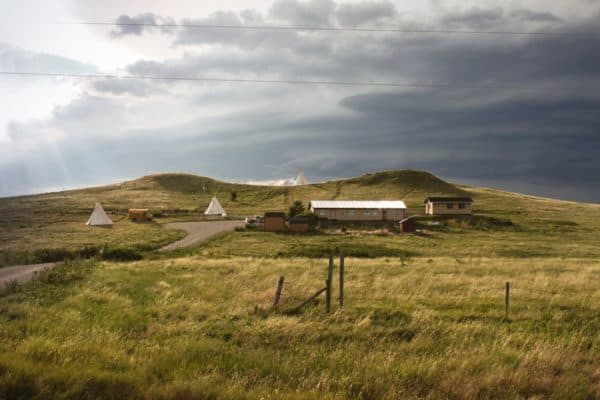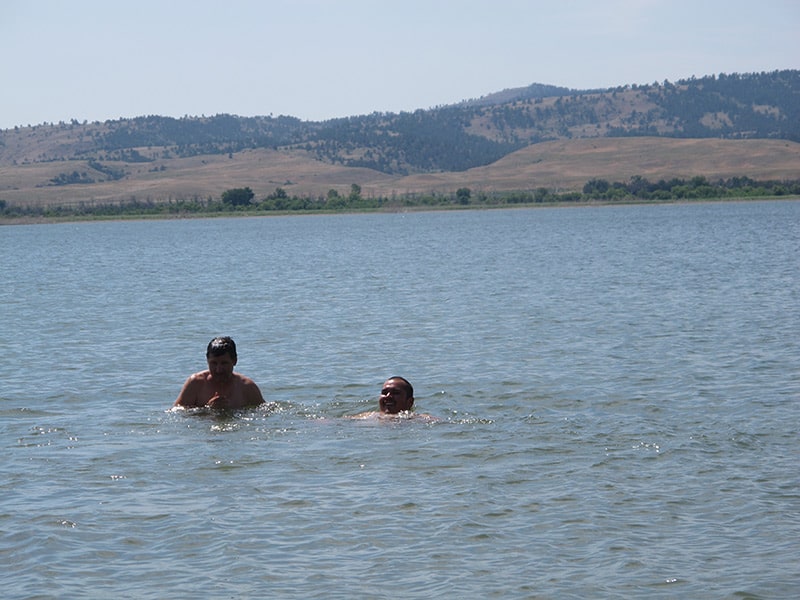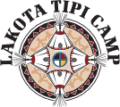South Dakota is the land of the great Lakota Nation. There are 9 Native Reservations in South Dakota: The Pine Ridge Reservation, home of the Oglala (Scatter Their Own), the Rosebud Reservation of the Sicangu (Burnt Thighs), the Standing Rock Reservation of the Hunkpapa (Camp at the Entrance) and the Sihasapa (Blackfeet), the Cheyenne River Reservation of the Mniconjou (Plant By The Water), the Oohe Nunpa (Two Kettle), the Itazipco (Without Bows), and Siha Sapa (Black Foot). There is also the Crow Creek Reservation of the Mdewakanton Dakota (People of The Spirit Lake) and the Ihanktonwan (People of the End). Additionally there is the Lower Brule Reservation of the Sicangu (Burnt Thighs or Brule) who are also called Kul Wicasa Oyate. The Sisseton Wahpeton Reservation (formerly known as Lake Traverse Reservation) is home of the Sisseton (People of the Fish Village/Penisula) and the Wahpeton (People Among The Leaves). Last but not at least there is the Yankton Reservation which is home of the Ihanktonwan Dakota Oyate and the Flandreau Santee Reservation which is home of the Mdewakanton and Wahpekute Dakota.



Located in the southwestern corner of South Dakota, the Pine Ridge Reservation is the second largest reservation in the United States at 2,800,000 acres. It is the land of the Oglala Lakota Sioux Nation and home to approximately 40,000 Oglala Lakota Tribal members. It is a very difficult task to count the residents on the Pine Ridge Reservation; surveys vary between 15,000 (U.S. census) and 47,197 tribal members (OST Census Office 10/2008 in Pine Ridge). The Oglala Lakota Oyate have a history with proud names like Tasunke Witko (Crazy Horse), Black Elk, American Horse, Red Cloud, Young Man Afraid Of His Horse, Little Wound, and many more.
The Pine Ridge Reservation is situated within the Oglala Lakota County where the Per-capita income makes it the second poorest County in the USA with an average annual income of $ 3,700 and an unemployment rate of 80%. Oglala Lakota County also has the highest population rate of Native Americans in the United States, and the lowest percentage of Caucasians. Residents suffer from serious illnesses like diabetes, heart disease and chronic health conditions at levels vastly disproportionate to the national average. The life expectancy rate on this reservation is 48 years for men and 52 years for women. The school dropout rate is over 50%, the incidence of teen suicide is 150% above the national average. Almost 50% of the residents on the Pine Ridge Reservation live under the poverty level.
Even today there are still residents on the reservation without plumbing facilities, without kitchen facilities, and without electricity. Despite these harsh conditions, despite of poverty and oppression, the Lakota people still proudly live a rich culture, work toward maintaining the cultural heritage and toward the revival of their language. Nowadays only about 4% of the Lakota are fluent Lakota speakers and most of these speakers are over 50 years old. It appears the Lakota speakers are declining; according to the US Census 2000 there were only 26% of the Lakota Population on the Pine Ridge Reservation fluent Lakota Speakers. The language will disappear if the schools don’t start intensively with immersion programs implementing the Lakota language into the curriculum. As of 2020 the Lakota Nation is again producing new fluent speakers. Lakota Language and Culture are alive and resilient and omnipresent.
